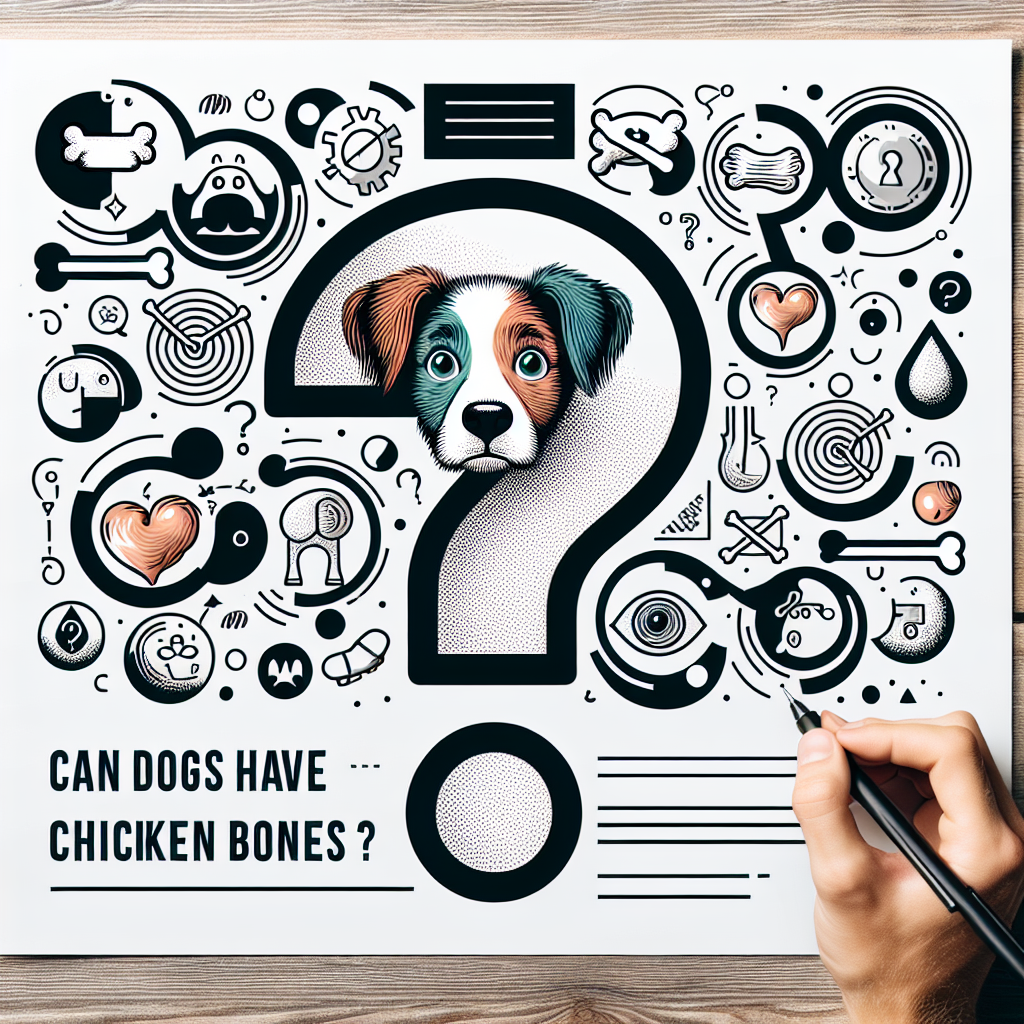Can Dogs Have Chicken Bones? Understanding the Risks and Benefits
When it comes to feeding our furry friends, many dog owners wonder about the safety of giving dogs chicken bones. While chicken can be a great source of protein for dogs, the type of bones you choose matters significantly. Here’s a closer look at the risks and benefits of giving chicken bones to dogs, as well as safe alternatives.
The Risks of Chicken Bones
-
Splintering: One of the biggest risks associated with chicken bones, particularly cooked ones, is their tendency to splinter. When dogs chew on cooked chicken bones, these sharp shards can break off and pose serious risks, including:
- Choking: Splintered bones can become lodged in a dog’s throat.
- Internal Injuries: Sharp pieces can puncture the gastrointestinal tract, leading to severe complications.
-
Digestive Issues: Even if a chicken bone doesn’t splinter, it can still cause digestive issues. Bones can be hard for dogs to digest and may result in:
- Constipation: Large pieces can become stuck in the intestines.
- Gastritis: Ingesting bone pieces may irritate the stomach lining, leading to inflammation.
- Weight Gain: If owners feed their dogs bones regularly without monitoring their overall diet, it can lead to obesity, especially if bones are high in fat.
Benefits of Raw Chicken Bones
While cooked chicken bones pose significant risks, raw chicken bones can be safer. Here’s why:
-
Nutritional Value: Raw chicken bones, especially those with meat attached, can provide essential nutrients, including calcium and phosphorus.
-
Dental Health: Chewing on raw bones can help maintain dental hygiene. It naturally cleans dogs’ teeth, reducing plaque buildup.
- Satisfaction and Enjoyment: Dogs enjoy chewing on bones. It can provide mental stimulation and reduce boredom, helping to alleviate behavioral issues.
Safe Practices for Feeding Bones
If you choose to give your dog chicken bones, consider the following guidelines:
-
Raw Over Cooked: Opt for raw chicken bones instead of cooked ones. Raw bones are less likely to splinter and pose health risks.
-
Supervision: Always supervise your dog when they’re chewing on bones. This way, you can intervene if they start to choke or swallow large pieces.
-
Size Matters: Ensure the bone is appropriate for your dog’s size. Small bones can be easily swallowed, while large bones may be too hard and can break your dog’s teeth.
-
Moderation: Bones should be an occasional treat, not a regular part of your dog’s diet. Overdoing it can lead to digestive issues.
- Consult Your Veterinarian: Always consult with your veterinarian before introducing bones into your dog’s diet, especially if your dog has a history of digestive problems or health issues.
Safe Alternatives
If you’re unsure about giving chicken bones, many alternatives can provide similar benefits without the risks:
-
Commercial Chews: Many pet stores offer safe, digestible chews designed for dental health.
-
Raw Veggies: Carrots, sweet potatoes, and pumpkin can be great for chewing without the risks associated with bones.
- Specialized Dog Bones: Consider pre-made dog bones specifically designed for dogs to chew on—these are typically formulated to be safe and nutritious.
Conclusion
While chicken bones can be a nutritious and enjoyable treat for some dogs, they also carry significant risks, particularly when cooked. Raw chicken bones can offer benefits with careful handling, but it’s crucial to prioritize safety. Always consult with a veterinarian to ensure your pet’s health and make informed decisions about their diet.





